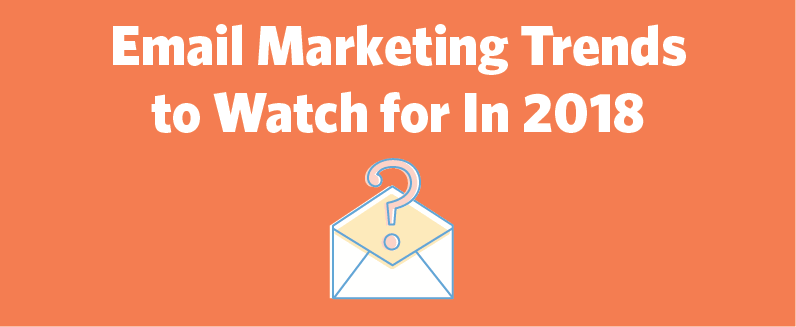By Liviu Tanase
Email has become the preferred way for people to stay informed about the brands and products they care about. However, the email marketers who enjoy the most success are the ones who adapt to the times.
Email marketing strategies are always changing. 2021 saw many developments, some unexpected. Let’s take a look at five changes in the industry you should check before 2022 begins. Adapting to these changes and trends can be a great boost to your email campaigns.
Email marketing will become even more relevant
In most areas, the lockdowns have decreased consumers’ habits of shopping in-store. McKinsey & Company found that 75% of people have tried new shopping behaviours as a result of the restrictions. With online shopping and home delivery becoming more popular, there’s never been more reliance on email.
The number of overall emails (sent and received) has increased every year since 2017. The projected number of emails that will be sent every day in 2022 is estimated to be an astonishing 333.2 billion.
For email marketers who want to make the most of their campaigns, this means you have a lot of competition in the inbox. So, what can you do to stand out? It’s as simple as planning and sending emails that people want to open. Customers will want to open emails that have real value.
For those who have yet to jump on the email marketing bandwagon, it may seem like it’s too little, too late. This isn’t so. Even brands that launch a newsletter in 2022 could enjoy tremendous returns and communicate all the right things to their customers.
Open rates are no longer the “end-all-be-all”
Apple’s Mail Privacy Protection (MPP) went into effect in September of 2021. Citing privacy issues, Apple stopped senders from tracking open rates using invisible pixels. Chad S. White, the Head of Research at Oracle Marketing Consulting, pointed out that this will lead to false opens, noting that “all Apple opens will be massively inflated going forward.” The problem, in a nutshell, is that unengaged subscribers will appear to be active.
So, open rates are pretty much dead. This doesn’t mean that they’re useless metrics, but it does mean that they are less reliable. Instead, we’ll see more focus on click rates and overall email engagement.
In 2022, more one-on-one communication with readers and customers will be the key. In the coming year, try to reframe the mindset that email marketing is a one-way form of communication. Encourage replies, and when a reader sends you a message, by all means, write back. Interactivity is likely to escalate like never before, and you can be ahead of the curve by adopting before your competitors.
Data decay has accelerated
On average, about a quarter of an email list goes bad in a year. In 2020 and 2021, email lists have been churning even faster. For instance, at ZeroBounce, we found that 30% of our email database has become obsolete in the past year, so we had to let go of those contacts.
Why did this happen?
For so many people, their employment situation has changed. The lockdowns resulted in thousands of companies going under. Some people were laid off and many changed jobs. In what has become known as “The Great Resignation,” millions of workers left their jobs and some retired early. The result is a considerable acceleration in data decay.
With all the competition in the inbox, marketers can’t afford to risk landing in the spam folder due to bad data. Periodic email list cleaning is an email marketing best practice that will only intensify in 2022. Keep an eye on the quality of your list and remove outdated contacts by using an email verifier. If you have a dynamic list and get lots of sign-ups, you may have to validate them monthly.
A few extra email marketing tips to conquer 2022
Email changed drastically over the last five years, but last year there were some real transformations. The wise email marketer stays aware of trends, adapting to regulations and practices.
With some brainstorming and trial and error, there’s no reason you can’t be a trendsetter instead of a follower. Whether you’re a beginner or expert-level email marketer, here are some extra tips to conquer 2022:
- Focus on click rates and conversions. After all, this is the name of the game. What content is leading to higher click rates and better conversions?
- Keep spam complaints at bay. You shouldn’t get more than one complaint for every 1,000 emails you send. Remove those contacts right away.
- Test plain-text vs HTML emails. Changing to plain-text or sending a more elaborate HTML email could make a big difference. Some audiences respond much better to one.
- Experiment with shorter or longer copy. This depends on your company, products and, most of all, your audience. Test different lengths until you find your sweet spot.
- Allow people a way to sign up. What’s the point of having a list if people have to struggle to subscribe? Have several sign-up forms and talk about your newsletter on all your other channels.
A spirit of experimentation can spark innovative email ideas
Marketers can learn much from all of the changes in email marketing and strategize on how to be ahead of the curve in 2022. Remember that trends start with someone. When you develop an idea, just because it’s very different and not practiced doesn’t mean you shouldn’t try it. A spirit of experimentation, curiosity and entrepreneurship is the right frame of mind when you want to use emails to their fullest potential.
By Liviu Tanase
Entrepreneur Leadership Network Contributor




